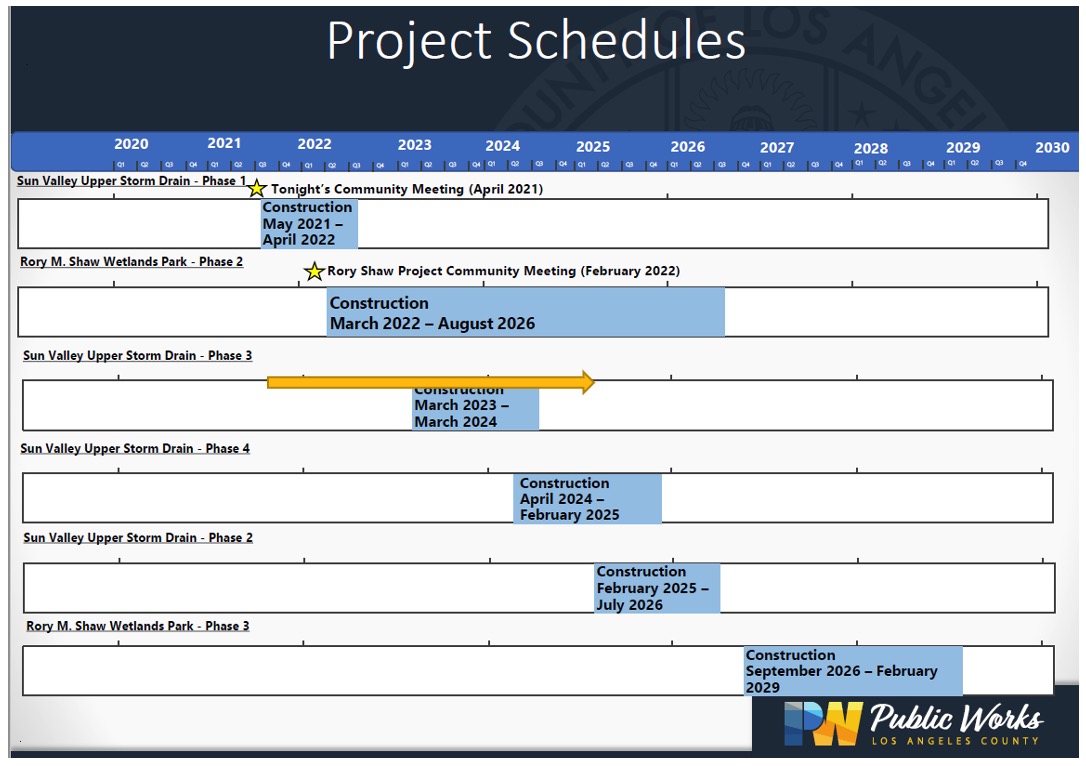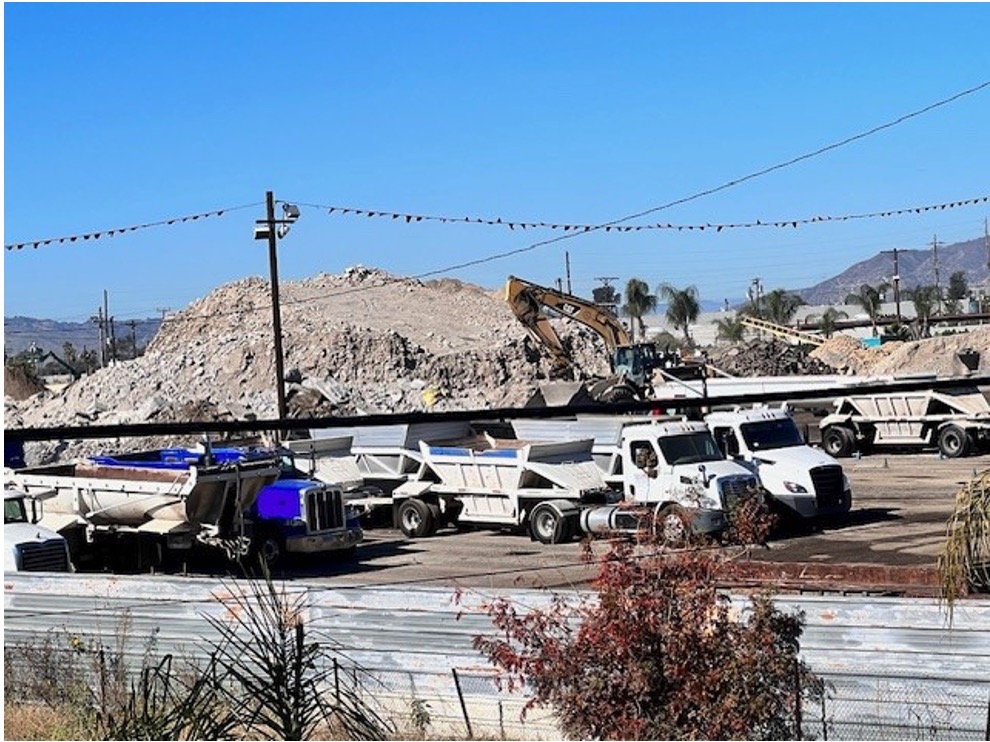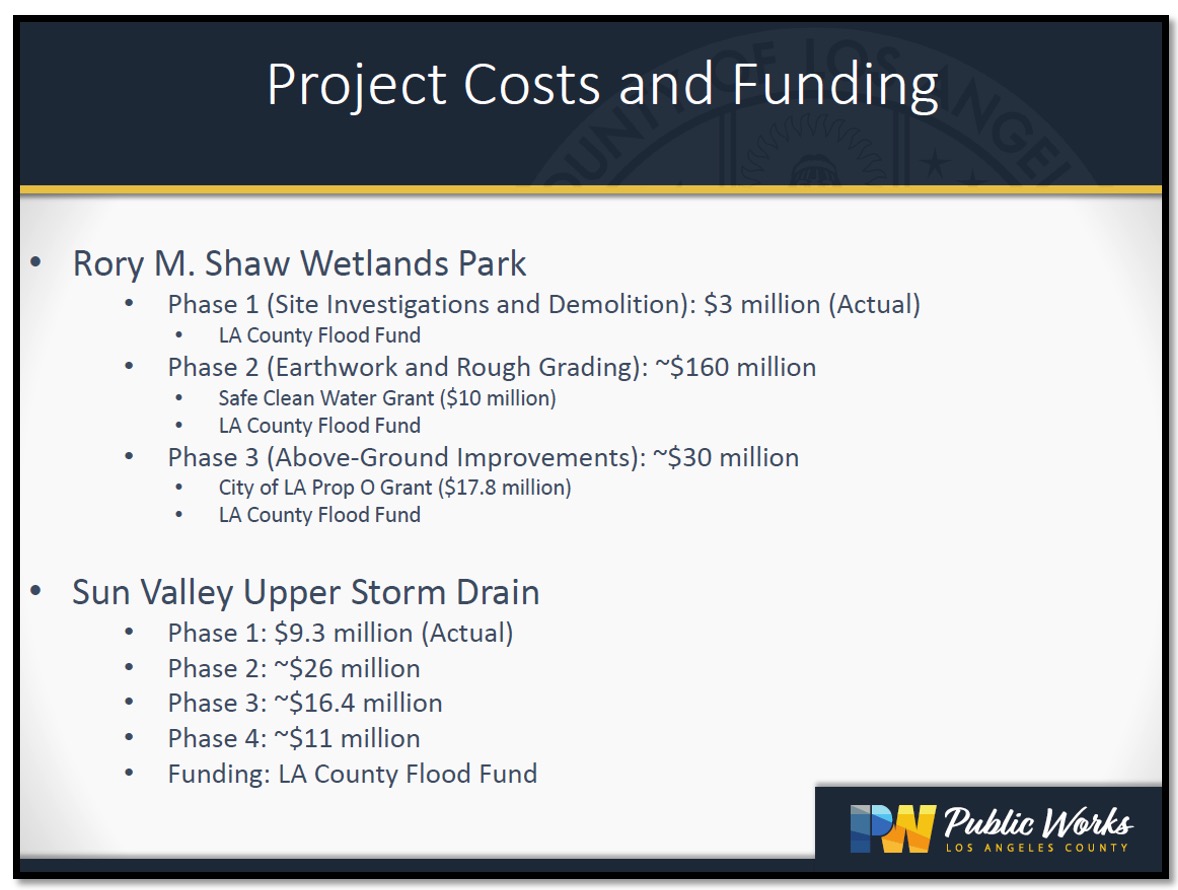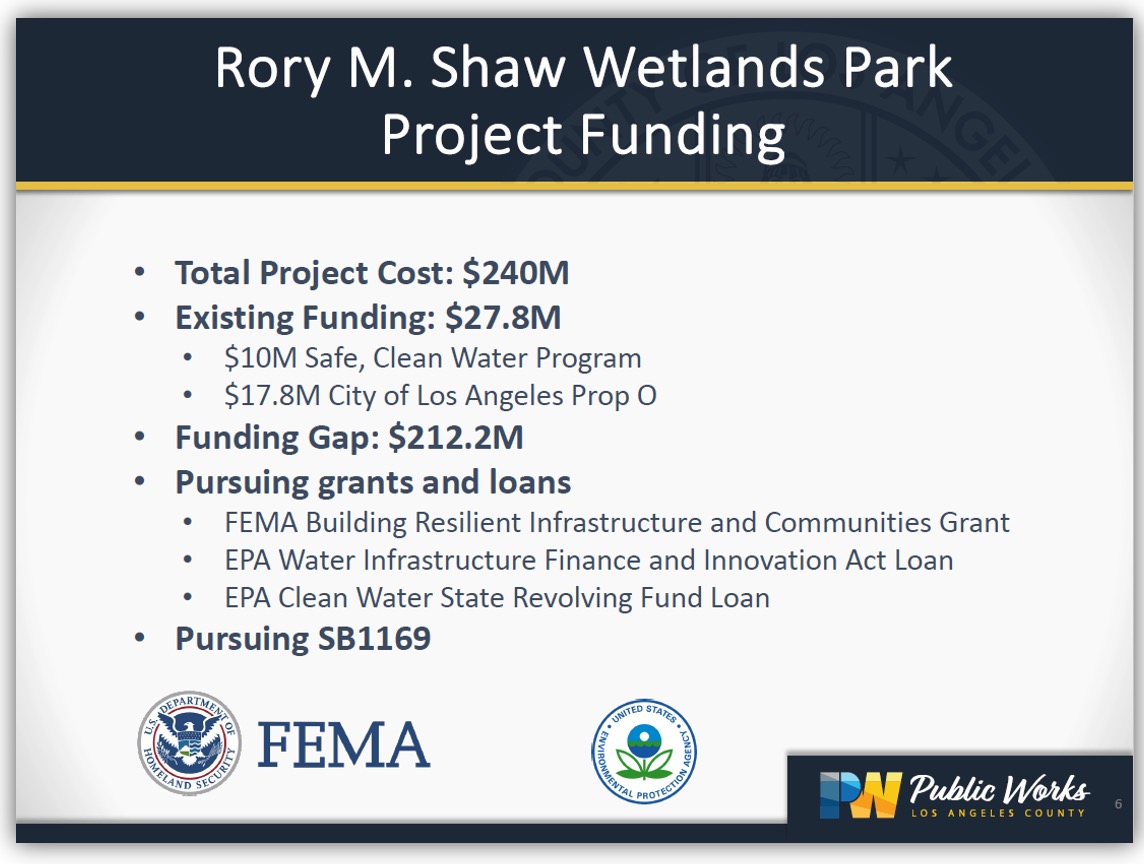Comments
SAN FERNANDO VALLEY - Before we delve into complex and somewhat ambiguous muddle of funding of Rory Shaw project, for those of you who don’t know let’s give some context here as to what Rory Shaw is and where Sun Valley is on the map, let me give you some context on how I came across Rory Shaw, and a small background of Sun Valley.
When you drive on Strathern Street in Sun Valley you couldn’t miss a large vacant lot sitting on Strathern and Tujunga; one would always wonder what this ugly massive unimproved monstrosity is. Not much information is available for public consumption on Rory Shaw.
It turns out that this dreadful 46-acre land would one day turn into a wonderful green oasis known as Rory Shaw Wetlands Park in a community deprived of green sanctuary known as Sun Valley.
What does Rory Shaw mean for Sun Valley, a community that many don’t know exists?
Sun Valley is a small low-income community of color in San Fernando Valley, one that is disproportionately exposed to greater levels of air pollution, despite overall improvements in air quality across the city. It reflects a legacy of structural racism in local policy making resulting in investment flows and bad land-use decisions apparent in maps drawn more than 80 years ago.
Access to parks, trees, and gardens can significantly improve the wellbeing of residents of Sun Valley, yet many neighborhoods have no access to such green spaces, and they experience worse air, water, and noise pollution. The area is covered in more bare asphalt than anything else.
For residents of Sun Valley, Rory Shaw means a wonderful green refuge, an open space in a community underserved in recreational opportunities, surrounded by harmful pollutants – gigantic and deep pocketed concrete manufacturers, construction debris crushers, auto dismantlers, recyclers, landfills, countertop manufacturers - operations of which are prevalent source of pollution, topped by spilling industrial runoff, oils and grease, trash into our roads, toxins of epic proportions; a community starved for shade, a fence line community where one observes climate change at its best.
People in Sun Valley were excited during the groundbreaking of this project, they welcomed it with open arms, looking forward to green space amid industrial pollution. They believed Rory Shaw would perhaps make breathing a little easier. Then again, it was too good to be true, as with every other changing project in the community.
Furthermore, Sun Valley is also vulnerable to flooding, which has prompted the County of Los Angeles to launch projects to alleviate local flooding problem with multipurpose solutions. Consequently, in 2004, the Sun Valley Watershed Multi-Benefit Plan was born, consisting of 18 different projects that would help address flood risk, improve water quality, create wildlife and open space opportunities with LACPW as managing agency. Rory Shaw, a 46-acre former engineered inert landfill containing organic landfill material, was one of these transformative projects, and perhaps the most important one for a small, underserved and underinvested environmental justice community known as Sun Valley. Even minor rainfall in Sun Valley streets causes property damage, flood, trash and debris overflowing into the streets: Rory Shaw would mitigate flood risk. Rory Shaw began with lofty aspirations, but the reality has painted a blatantly different picture. That beautiful dream never came true. Today Rory Shaw sits as little more than a dirt pit, surrounded by dust and debris in and out of it, contributing to air pollution arising from neighboring recycling plant, which, ironically, crashes construction debris right next to a potential green space.

Strathern
Remarkably, but quite ironically, in 2014, in relatively earlier glorious days of its inception, the Sun Valley Watershed earned the Envision Platinum award by the Institute for Sustainable Infrastructure, the highest level attainable in the Envision System. One may rightfully gather that a critical infrastructure project like this will not drag for over two decades, and still counting. The project was expected to be completed and operational by 2029, but the schedule below is getting a push back even further because there is no funding.
![]()

LACPW Presentation of 2021

Recycling next to future Rory Shaw
In other words, instead of providing relief from the scorching heat and pollution that plague Sun Valley, Rory Shaw has become a source of obstruction, nuisance, frustration, and disappointment. It is a symbol of environmental racism. Moreover, the delay of Rory Shaw intensifies disparities the community faces. The plight of it underscores broader issues of environmental justice and inequity.
So now, what happened to funds of this award-winning green county project?
In a recent interview with Spectrum TV, Kerjon Lee, from LA Public Works, says at one time there was funding, but in 20 years since the project began, construction costs have skyrocketed, blowing the first budget out of the water.
Would it be reasonable to ask why didn’t the county do anything when funds were available and costs were down 20 years ago? Why a project of this magnitude and importance keeps getting push back? Finally, what happened to the funds? How did they vanish?
The project was funded by the Los Angeles County Flood Control District, the Los Angeles Department of Water and Power, and City of Los Angeles Proposition O grant funds. According the final Sun Valley Watershed Management Plan of 2004, the near-term grant opportunities targeted grants available in the next 2 to 3 years to fund projects identified in 2004 and 2005 in the prioritization of projects. The grants available in the long term were then approved bonds, such as Proposition 50, or grant programs such as the City of Los Angeles Proposition K, which was scheduled to provide grants over 25 years.

LACPW, 2023
I will not go into details of all funding here. I want to mention Measures W, O, and Prop. K, among others, as they are emblematic of how critical infrastructure projects are slow to deliver pubic benefits even when money is available, particularly in environmental justice low income community of color that has been neglected by government services for decades.
Measure W, a parcel tax of 2.5 cents a square foot of impermeable space, approved by voters in 2018 aimed at improving LA’s aging stormwater capture system. A typical homeowner pays between $50 to $125 per year, while large commercial spaces with parking lots could pay as much as $10,000. Revenue generated from Measure W would be used to pay for regional and municipal projects that improved water quality and might also increase water supply and provide community benefits such as parks or wetlands. In the case of Sun Valley, it’s a value pack, a perfect solution to many problems. But where is the progress?
Unfortunately, in the case of Measure W, the county did not outline specific projects that would be financed, in its place county left the decision making to a slow bureaucratic process with various city departments: with too many cooks in the kitchen. And we all know how city treats disadvantaged areas that have no proper representation even from their own city council.
But even with this notoriously slow process, you don’t hear the name Rory Shaw on any media platform. Had we not inquired about it, only selected few will know that this project existed. County doesn’t advertise it because it’s a county failure.
Let’s fast forward two decades to learn that presently the county has $212 million in unmet needs. Current projections of Rory Shaw are evaluated at $240 million. Once again, 20 years later, the county is looking into getting funds, the same funds that were available 20 years ago.

LACPW, 2024
Proposition O authorized the City of Los Angeles to fund projects (up to $500 million) designed to prevent and remove pollutants from our regional waterways and ocean, consequently protecting public safety while meeting Federal Clean Water Act regulations. Los Angeles voters overwhelmingly passed the measure in 2004. Proposition O funds projects are represented in one or more of the following categories:
Water-quality protection of rivers, lakes, beaches, bays and the ocean
Water conservation, drinking water and source protection
Flood water reduction, river and neighborhood parks that prevent polluted runoff and improve water quality
Stormwater capture, cleanup and re-use.
Rory Shaw is a listed project under Prop. O. Its schedule is not controlled by Prop O. But it is not clear why. Projects (lacitysan.org)
Fascinatingly, much of the county activity has involved project evaluation, feasibility studies, permits, and design/redesign work. What’s with Rory Shaw, longtime residents recall that the project had been in redesign phase for over a decade now. The county did not even commit to its own timeline. In the present day, county is still exploring avenues of funding to make Rory Shaw operational, despite the project being approved two decades ago with sufficient funding to begin with.
What happened to the funds? Did they go to more affluent neighborhoods in the city?
Where are the funds from Proposition K that ordered the allocation of $143,650,000 of the total amount generated over 30 years through an open and competitive process for public agencies, city departments, and nonprofit organizations for improvement projects in several categories, including regional recreational facilities, urban greening, acquisition of parks and natural lands, among other things.
In the final analysis, we're left with a multitude of questions but few concrete answers. Yet, it's increasingly evident that the prolonged delay of the Rory Shaw project isn't solely attributable to funding shortages. Rather, it underscores systemic issues plaguing Sun Valley—a marginalized community facing environmental injustices. Projects like Rory Shaw, despite their potential to transform lives, often find themselves relegated to the backburner amidst competing municipal priorities. Unfortunately, securing meaningful change in such circumstances remains an uphill battle.
To sum up, the delay in the Rory Shaw project, ostensibly caused by financial limitations and bureaucratic impasse, represents more than just a minor inconvenience for the marginalized and neglected community of Sun Valley. Consequently, residents are left to endure scorching summers without the anticipated relief of green spaces and shade.Where did the funds disappear?
(Mihran Kalaydjian has over twenty years of public affairs, government relations, legislative affairs, public policy, community relations and strategic communications experience. He is a leading member of the community and a devoted civic engagement activist for education spearheading numerous academic initiatives in local political forums.)
(Mariam Moore is a resident of Sun Valley, community and public health advocate, and an environmental activist.)






